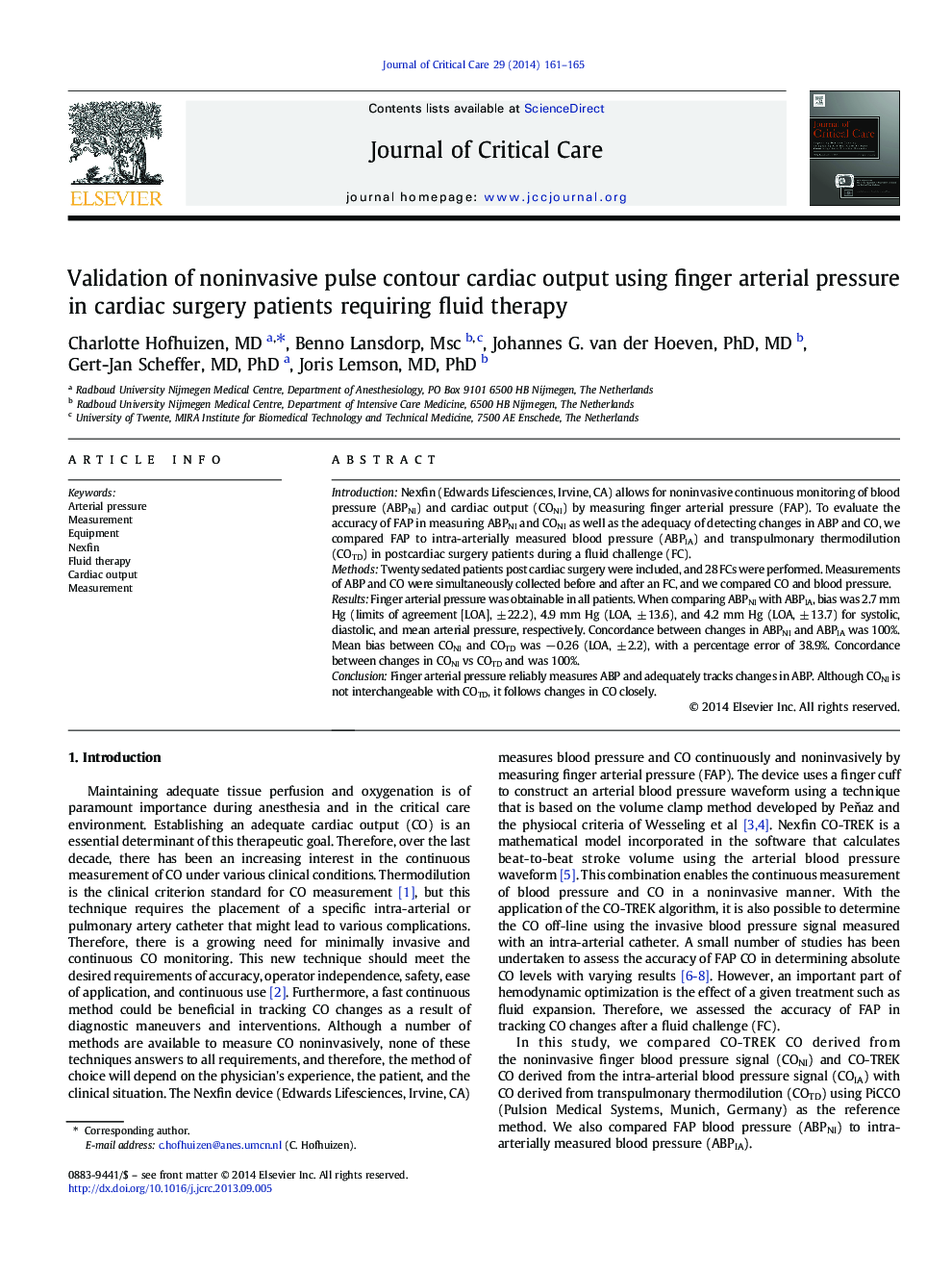| Article ID | Journal | Published Year | Pages | File Type |
|---|---|---|---|---|
| 2764673 | Journal of Critical Care | 2014 | 5 Pages |
IntroductionNexfin (Edwards Lifesciences, Irvine, CA) allows for noninvasive continuous monitoring of blood pressure (ABPNI) and cardiac output (CONI) by measuring finger arterial pressure (FAP). To evaluate the accuracy of FAP in measuring ABPNI and CONI as well as the adequacy of detecting changes in ABP and CO, we compared FAP to intra-arterially measured blood pressure (ABPIA) and transpulmonary thermodilution (COTD) in postcardiac surgery patients during a fluid challenge (FC).MethodsTwenty sedated patients post cardiac surgery were included, and 28 FCs were performed. Measurements of ABP and CO were simultaneously collected before and after an FC, and we compared CO and blood pressure.ResultsFinger arterial pressure was obtainable in all patients. When comparing ABPNI with ABPIA, bias was 2.7 mm Hg (limits of agreement [LOA], ± 22.2), 4.9 mm Hg (LOA, ± 13.6), and 4.2 mm Hg (LOA, ± 13.7) for systolic, diastolic, and mean arterial pressure, respectively. Concordance between changes in ABPNI and ABPIA was 100%. Mean bias between CONI and COTD was − 0.26 (LOA, ± 2.2), with a percentage error of 38.9%. Concordance between changes in CONI vs COTD and was 100%.ConclusionFinger arterial pressure reliably measures ABP and adequately tracks changes in ABP. Although CONI is not interchangeable with COTD, it follows changes in CO closely.
